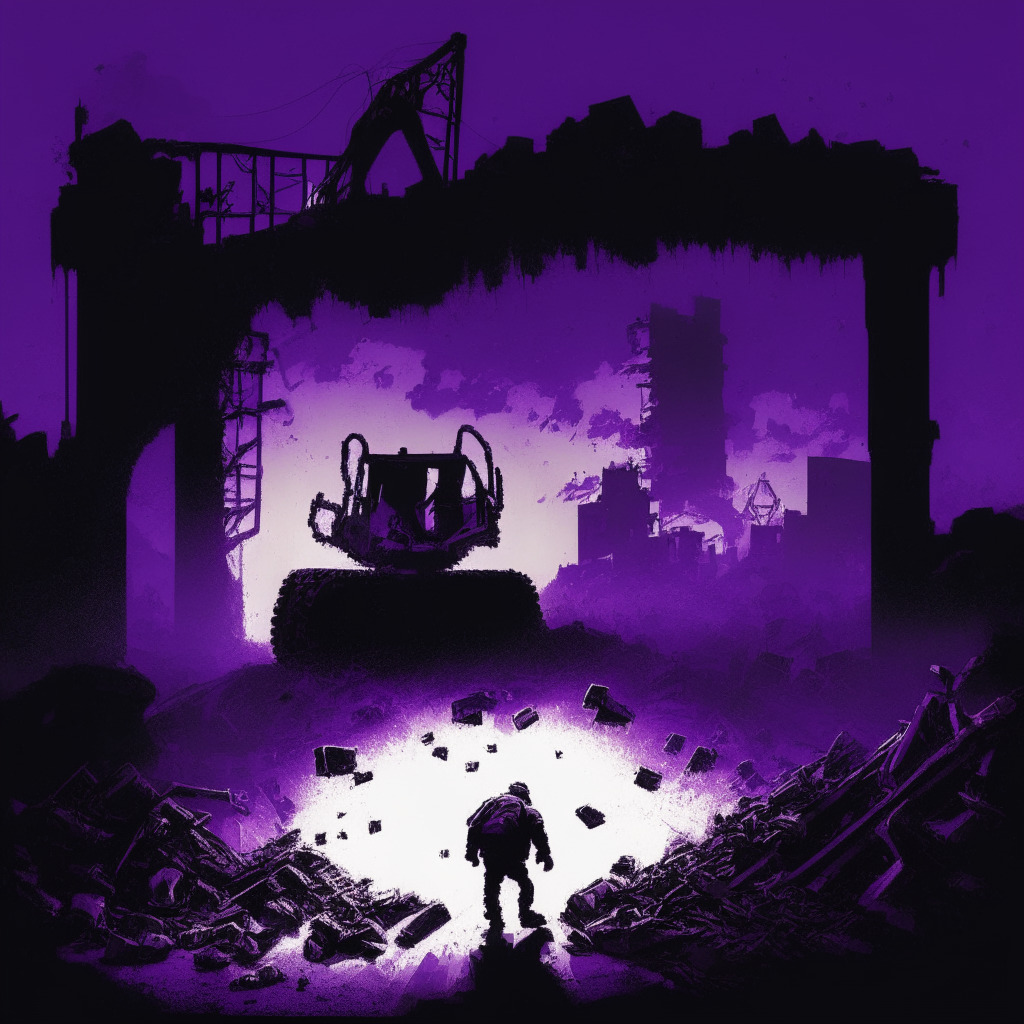In the aftermath of last month’s hack attack on the Curve exchange, new questions have been raised about the paradigm of decentralized finance (DeFi), that stands face to face with centralized platforms seen as victims of greed and poor risk management practices. The circumstances have forced us to reckon with the reality that DeFi platforms are susceptible too.
Curve, a renowned decentralized exchange operating on the Ethereum network, was hit hard last month with a loss exceeding $70 million. This news plunged CRV, the native token of the exchange, into a sharp downward spiral, losing over 20% of its value in the immediate aftermath.
Apocalyptic predictions about the collapse of Curve – often touted as a “blue-chip” exchange – were profuse. The situation brought to light the risky lending activities run by Curve Founder, Michael Egorov, who collateralized 33% of the total CRV supply to secure personal loans. Under a worst-case scenario, the sharp depreciations in CRV could have triggered automatic liquidations by DeFi lending platforms, with potentially system-wide ramifications.
Despite the grim predictions, a remarkable recovery ensued. Curve offered its exploiters a 10% bounty for asset returns, allowing the platform to recover almost 75% of the lost resources. A slight rebound in the price of CRV has been noted, as Egorov commenced settlements of his loans, reducing the risk of a comprehensive liquidation.
The shakeup at Curve, however, is a pervasive warning to the wider DeFi community. Launched in 2020, Curve differentiated itself with its focus on like-kind assets and the incentive structure based around its native CRV token. These features have seen it handle transaction volumes surpassing other decentralized exchange platforms like Uniswap during the 2020-21 DeFi boom.
Curve’s influence within the broader DeFi ecosystem expanded with offshoot platforms gravitating towards it and using its underlying system for lending and borrowing activities. Nevertheless, recent declines in the price of CRV have faded Curve’s dominance, allowing competitors like Uniswap V3 to claim part of its market share.
The viability of Curve’s reward model, called “ponzinomics” by Sid Powell, CEO of Maple Finance, appears uncertain in the wake of the CRV price markdown. He flagged concerns over CRV’s dwindling utility and negative repercussions on the offshoot platforms built on Curve’s total value locked.
Safe despite its simplistic design, Curve remained immune to colossal hacks until the recent encounter. The exploit was the fallout of a glitch in the Vyper compiler, scrutinizing the many ways in which digital savages can theoretically compromise decentralized systems.
The troubling situation is further complicated by the disturbing fact that the founder of a high-status DeFi protocol was able to amass over a third of its native token’s supply for collateral. The risks were not only predictable but held far-reaching implications for the protocol and the entire DeFi landscape.
Analysts have rightly pointed to the transparency inherent to DeFi, citing how blockchain technology enabled monitoring the health of Egorov’s lending positions constantly. However, the power and the potential of heavyweight actors like Justin Sun in a crisis remain shrouded in mystery.
It is clear that DeFi, although not immune to attacks and failures, retains a unique ability to recover and adapt. While hurdles exist, such challenges provide a critical opportunity for the community to learn and improve in the name of safer, future practices. The Curve scenario is an important reminder that we ought not to take anything for granted in the decentralized world, and always be prepared for the unexpected.
Source: Coindesk




